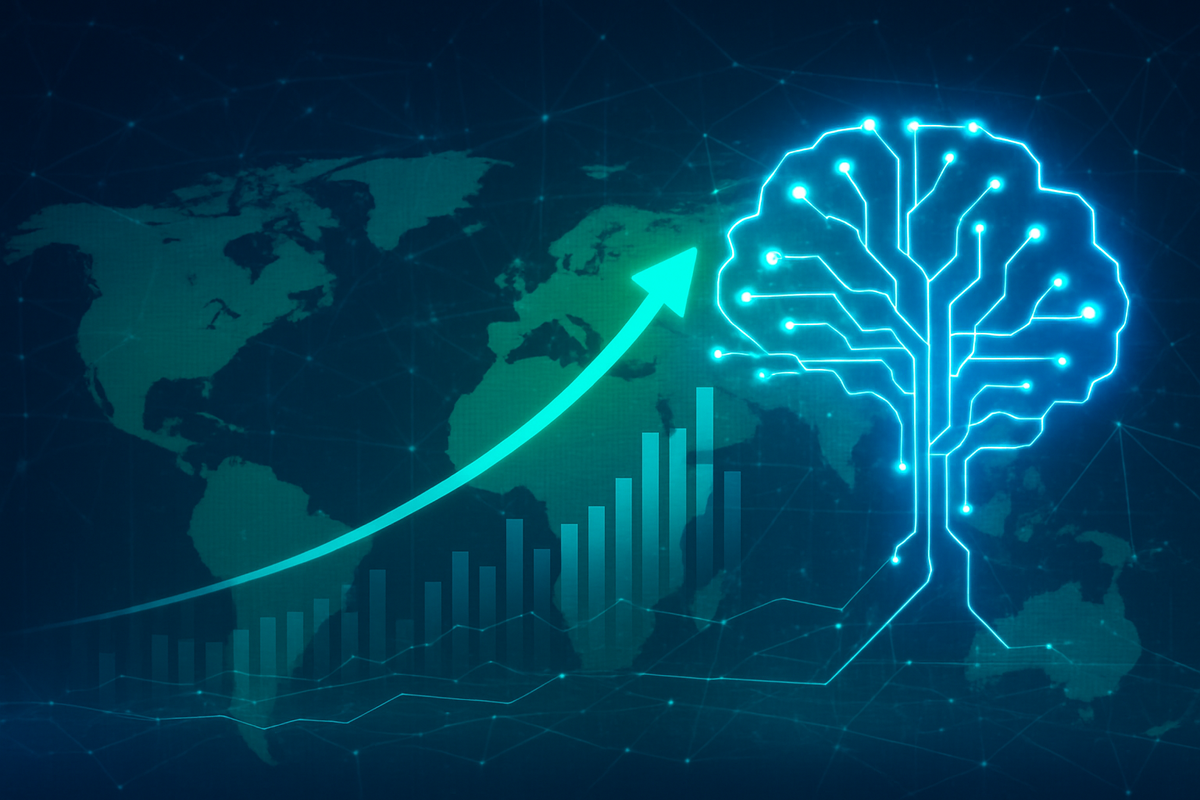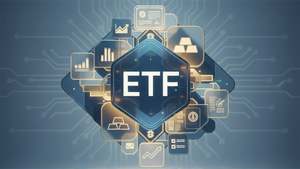
The technology sector continues its relentless march as the primary engine of global financial markets, with trends in tech stocks and the Nasdaq Composite Index dictating overall market performance. This enduring influence, amplified by breakthroughs in Artificial Intelligence (AI) and digital transformation, has created a dynamic landscape where innovation directly translates into market capitalization and investor sentiment. Companies like Duolingo (NASDAQ: DUOL), with its consistent growth and strategic integration of AI, exemplify how individual tech players contribute to and benefit from this overarching trend, setting new benchmarks for success in an increasingly digitized world.
The immediate implication of this tech dominance is a heightened sensitivity of global indices to the performance of a relatively small number of mega-cap technology companies. The Nasdaq Composite, heavily weighted towards these innovators, acts as a barometer for the broader market's health and future direction. Its robust performance in recent years underscores a fundamental shift in economic value creation, where intangible assets, software, and data intelligence are paramount. Investors worldwide are keenly watching every fluctuation, recognizing that the fortunes of the tech giants often foreshadow the trajectory of their own portfolios.
Tech's Unrivaled Influence: A Deep Dive into Market Dynamics
The technology sector's grip on global markets is more pronounced than ever, driven by a confluence of innovation, strategic capital allocation, and an insatiable demand for digital solutions. As of early 2025, technology companies command an overwhelming share of global market capitalization, with the sector accounting for approximately 33% of the Global Top 100 companies. This dominance is not merely a reflection of size but also of the sector's continuous ability to redefine industries and generate substantial economic value. The "Magnificent Seven" – a cohort of leading U.S. tech firms – collectively reached a staggering market capitalization of $17.6 trillion by the end of 2024, eclipsing the total market cap of entire continents.
A significant catalyst for this sustained growth has been the rapid advancement and adoption of Artificial Intelligence. AI is not just a technological trend; it's a foundational amplifier that accelerates progress across all domains, unlocking new possibilities in everything from data analytics to automation. Global IT spending is projected to grow by 9.3% in 2025, with data center and software segments experiencing double-digit expansion, largely fueled by AI investments. The AI semiconductor market alone is expected to surpass $150 billion in 2025, highlighting the critical role of hardware in powering this revolution. This surge in AI-optimized hardware demand across cloud data centers, autonomous systems, and edge computing underscores AI's central role in driving both market growth and technological advancement.
The Nasdaq Composite Index has been a primary beneficiary and reflection of these trends. After a stellar 2024, where it gained 29.6% (with the "Magnificent Seven" rising 67.3%), the Nasdaq-100 (tracking the 100 largest nonfinancial companies on Nasdaq) continued its upward trajectory into 2025. The index soared 11.2% in Q3 2025, contributing to a 17.3% year-to-date gain, showcasing remarkable resilience despite market volatility earlier in the year. This performance has been significantly buoyed by the strong U.S. economic growth, controlled inflation, and increased consumer spending, coupled with the growing adoption of AI. Furthermore, the Federal Reserve's anticipated easing of monetary policy, with rate cuts beginning in late 2024 and expected to continue through 2025, has provided a tailwind for growth-oriented tech stocks, making it easier for companies to fund expansion and for venture capitalists to invest in emerging firms.
Winners and Losers in the Tech-Driven Economy
In this tech-centric market, certain companies and sub-sectors are poised for significant gains, while others face increasing pressure to adapt or risk being left behind. Duolingo (NASDAQ: DUOL) stands out as a clear winner, demonstrating how effective product strategy and user engagement can translate into robust financial performance. The language-learning platform has consistently beaten revenue and earnings estimates, with its stock gaining 118% in 2023 and continuing strong into 2024 and 2025. Duolingo's success is driven by its highly engaging gamified learning experience, global reach, and strategic content expansion into subjects like math and music. Crucially, its integration of AI features, such as Duolingo Max, which offers AI-powered explanations and roleplay, enhances its premium offerings and appeals to a broader, more monetizable user base. This ability to convert free users into paid subscribers, coupled with strong brand recognition, solidifies its position as a growth stock in the digital education space.
Beyond individual success stories like Duolingo, the broader AI ecosystem is minting new winners. Semiconductor companies at the forefront of AI chip development, such as Nvidia (NASDAQ: NVDA) and Broadcom (NASDAQ: AVGO), have seen their valuations skyrocket. Nvidia, a key enabler of the AI revolution, added $2.1 trillion in value in 2024, reaching a $3.29 trillion valuation, and continued its stellar performance in 2025. Broadcom also saw a 47% year-to-date gain in 2025 as of September. Cloud computing providers, essential infrastructure for AI deployment, are also significant beneficiaries. Conversely, companies that fail to innovate or integrate AI effectively into their operations risk losing market share and investor confidence. Traditional industries slow to embrace digital transformation or those heavily reliant on outdated technologies may find themselves struggling to compete in this fast-evolving landscape.
The intense competition within the tech sector also creates a challenging environment. While some companies thrive, others may struggle to differentiate their offerings or attract sufficient capital. Startups and smaller tech firms need to demonstrate clear value propositions and scalable business models to survive amidst the giants. Even established players must constantly innovate to fend off nimble competitors and maintain their growth trajectories. The "winner-take-most" dynamics often seen in network-effect-driven tech markets mean that a few dominant platforms can capture a disproportionate share of the market, making it difficult for challengers to gain significant traction.
Broader Significance and Ripple Effects
The tech sector's ascendance is more than just a market trend; it's a fundamental reshaping of global economies and societies. This event fits squarely into the broader industry trend of accelerated digital transformation, where technology is no longer just a supporting function but the core of business strategy across virtually every sector. AI, in particular, is acting as a "horizontal technology," meaning its impact is not confined to tech companies but extends to manufacturing, healthcare, finance, logistics, and even entertainment, driving efficiency gains and new product development. The ripple effects are profound: enhanced productivity for businesses, new job categories requiring specialized tech skills, and a global push towards digital literacy and infrastructure development.
The influence of tech giants and the Nasdaq's performance extends to competitors and partners globally. A strong U.S. tech market often signals a positive outlook for innovation and growth, attracting capital and fostering similar tech booms in other regions. Conversely, any significant downturn in the Nasdaq can trigger broader market corrections due to the interconnectedness of global financial systems and supply chains. For instance, the demand for advanced semiconductors driven by U.S. tech companies has fueled growth in Asian manufacturing hubs, creating complex interdependencies. This global contagion, both positive and negative, underscores the central role of the U.S. tech sector in the world economy.
Regulatory and policy implications are also becoming increasingly significant. Governments worldwide are grappling with how to regulate powerful tech monopolies, address data privacy concerns, manage the ethical implications of AI, and ensure fair competition. The geopolitical landscape is heavily influenced by technological leadership, particularly in critical areas like AI and semiconductors. The "AI semiconductor boom" is not just an economic accelerant but also a geopolitical flashpoint, with nations vying for dominance in chip fabrication and design. This has led to strategic pushes for self-sufficiency and localized chip production in various countries, potentially reshaping global supply chains and trade relations. Historically, periods of rapid technological advancement, such as the dot-com boom of the late 1990s, have been characterized by similar market euphoria, followed by periods of consolidation and more sustainable growth, offering valuable lessons for navigating the current environment.
What Comes Next: Navigating the Future of Tech
Looking ahead, the short-term and long-term possibilities for the technology sector and the Nasdaq Composite remain largely positive, albeit with inherent volatilities. In the short term, continued strong earnings reports from leading tech companies, coupled with the Federal Reserve's anticipated interest rate cuts through late 2025, are expected to provide further tailwinds. The relentless pace of AI innovation will likely continue to drive investment and create new market opportunities, particularly in areas like specialized AI hardware, advanced software solutions, and AI-driven services. Companies will need to strategically pivot or adapt by integrating AI into their core operations, enhancing cybersecurity measures, and expanding into emerging digital markets to stay competitive.
In the long term, the tech sector is poised for sustained growth, driven by ongoing digital transformation, the maturation of AI, and the expansion into new frontiers like quantum computing and advanced biotechnology. Market opportunities will emerge in areas that leverage AI for personalized experiences, automated decision-making, and complex problem-solving across industries. However, challenges will also arise, including intensified regulatory scrutiny, potential talent shortages in specialized tech fields, and the need to manage the ethical implications of powerful AI systems. Geopolitical tensions, particularly concerning technology trade and supply chains, will also remain a significant factor, potentially leading to further fragmentation or diversification of global tech production.
Potential scenarios and outcomes include a continued "AI arms race" among leading tech companies and nations, accelerating innovation but also raising concerns about market concentration. We could see a greater emphasis on "reshoring" or "friendshoring" of semiconductor manufacturing to enhance supply chain resilience. For investors, identifying companies with sustainable competitive advantages, strong intellectual property in AI, and diversified revenue streams will be crucial. The ability of tech firms to effectively monetize their innovations and maintain high user engagement, as demonstrated by Duolingo, will be key indicators of long-term success.
Comprehensive Wrap-Up: Tech's Enduring Legacy
In summary, the technology sector's global influence, epitomized by the robust performance of the Nasdaq Composite Index and the innovative strides of companies like Duolingo (NASDAQ: DUOL), is an undeniable force shaping the 21st-century economy. The relentless pursuit of digital transformation, coupled with the revolutionary impact of Artificial Intelligence, has cemented tech's position as the primary driver of market performance, economic growth, and societal advancement. Key takeaways include the dominant market capitalization of tech giants, the pivotal role of AI as a growth catalyst, and the Nasdaq's consistent outperformance as a leading indicator of global market sentiment.
Moving forward, the market will continue to be heavily influenced by advancements in AI, monetary policy decisions by central banks, and geopolitical developments. Investors should remain vigilant, focusing on companies that demonstrate strong innovation pipelines, effective monetization strategies, and resilience in the face of evolving market dynamics. The ability of firms to adapt to new regulatory environments and manage complex supply chains will also be critical determinants of success.
The lasting impact of this tech-driven era will be a fundamentally reshaped global economy, characterized by unprecedented levels of connectivity, automation, and data intelligence. While the path ahead may present its share of volatility and challenges, the underlying trends suggest that technology will continue to be the most significant market-moving force for the foreseeable future. Investors should watch for continued developments in AI integration across industries, the evolution of regulatory frameworks for tech, and the quarterly earnings reports of leading tech companies, as these will provide crucial insights into the market's trajectory in the coming months and years.
This content is intended for informational purposes only and is not financial advice





